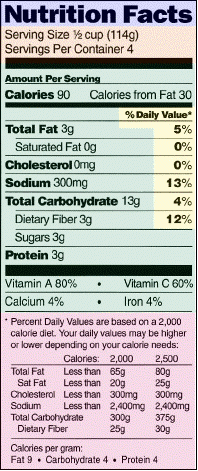You Can Have Sweets
 Before the 1994 revision of the American Diabetes Association nutrition recommendations, it was thought that people with diabetes should avoid all forms of sugar. This is more difficult than it may sound, due to the fact that all carbohydrate-containing foods contain some amount of sugar. Many research studies have shown that meals or snacks which contain sugar do not make the blood sugar rise higher than meals of equal carb levels which do not contain sugar. Keep in mind though, that if the sugar containing meal exceeds the carbohydrate goal for that meal, your blood sugar levels will go up. Before the 1994 revision of the American Diabetes Association nutrition recommendations, it was thought that people with diabetes should avoid all forms of sugar. This is more difficult than it may sound, due to the fact that all carbohydrate-containing foods contain some amount of sugar. Many research studies have shown that meals or snacks which contain sugar do not make the blood sugar rise higher than meals of equal carb levels which do not contain sugar. Keep in mind though, that if the sugar containing meal exceeds the carbohydrate goal for that meal, your blood sugar levels will go up.
In this example, on the food label to the right, a ½ cup serving would contain 13 gms of total carbohydrate which is equal to 1 carbohydrate serving.
The amount of sugar listed here is minimal (3 gms), but even if the sugar content were equal to 13 gms, you could still include this item in your daily meal plan.
Before you try adding sugar into your meal plan, you need to consider what you like to eat!
- If you have a sweet tooth. Remember that a normal serving of a sweet item may be fairly high in carbohydrates. For example, a can of regular soda contains approximately 45 gms of carbohydrates. If you add that full amount to a meal that has a limit of 50 grams of carbohydrate, you will only have room to add either a serving of vegetable (5 gms carb) or 1/3 of a serving of another carbohydrate like bread, potato or fruit (15 gms carb) in addition to the meat and fat planned for that meal. Occasionally, including the full can of soda may be beneficial for the emotional satisfaction derived from it. But on a regular basis, this would limit the amount of nutrients that your body would get, especially if you drink more than one can of soda on the same day. If you are able to adjust the portion size and eat less of the high sugar food, this would leave room for more carb containing foods that were higher in their nutrient density.
- Tips for eating sweets. Prior to being diagnosed with diabetes, you may have selected a sweetened breakfast cereal on a routine basis. Now you can still include this cereal, but if you mix one serving of your favorite sweetened cereal with a serving of a non-sweetened cereal, the carb content will most likely be closer to your goal at that meal, the overall portion size will be more satisfying and the flavor will still be similar to what you experienced before. Below is a list of a variety of cereals and their corresponding portion size equal to 15 grams of carbohydrate.
| ½ cup |
½ cup |
1 cup |
½ cup |
| Captain'Crunch® |
Bran Flakes |
Cheerios |
Shredded Wheat® |
- There's fat in some sweets! Another thing to consider is that many sugar-containing foods like cakes, cookies, pies and ice cream also contain a high level of fat. If your goal to improve your blood glucose includes weight loss, you should try to limit these foods. If maintaining control over your eating requires including something sweet on a frequent basis, try including low fat choices like Popsicles®, graham crackers or low fat frozen ice cream or yogurt at a meal or snack time.
√ Test Your Understanding
 Continue Continue 
|





